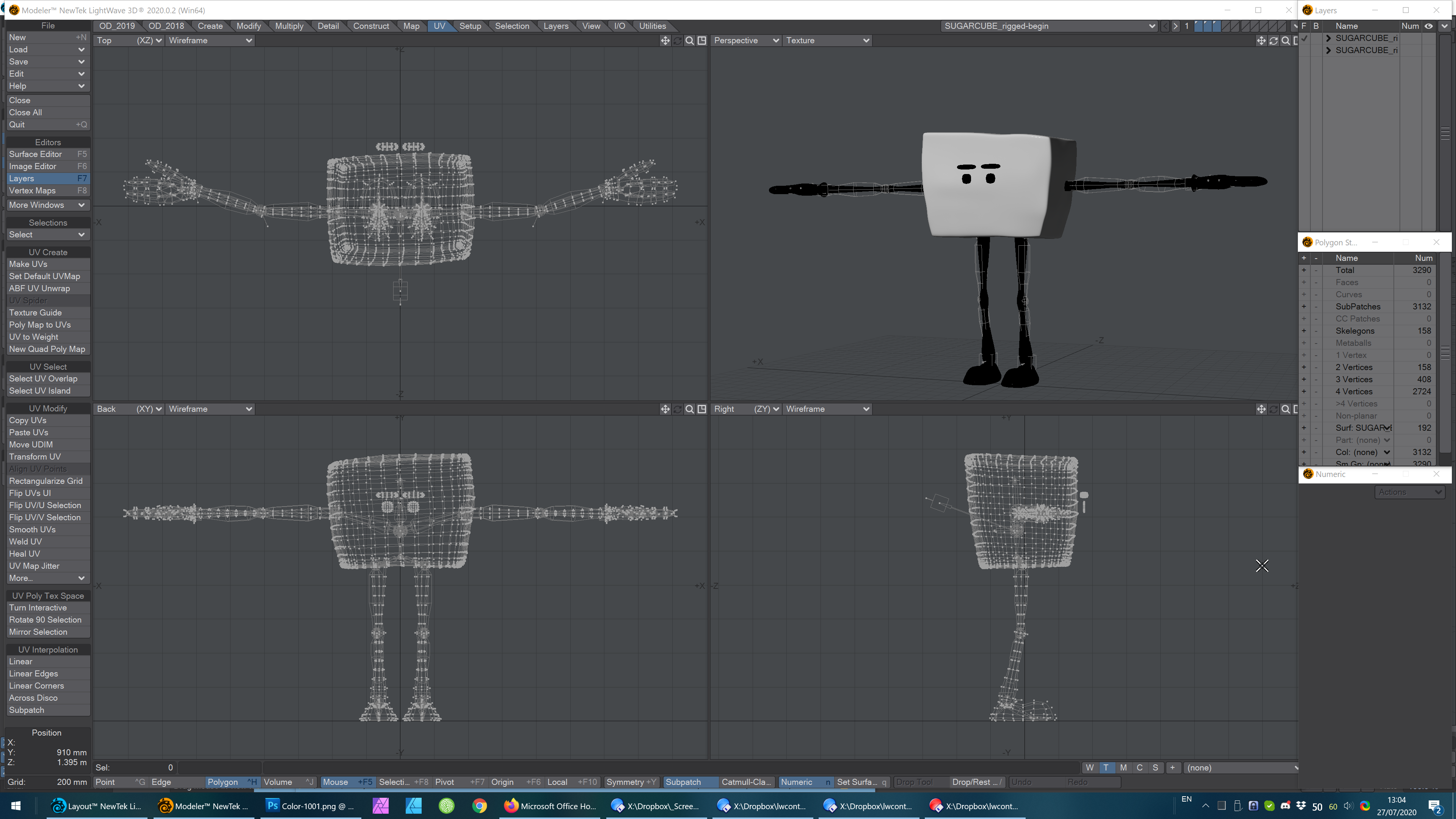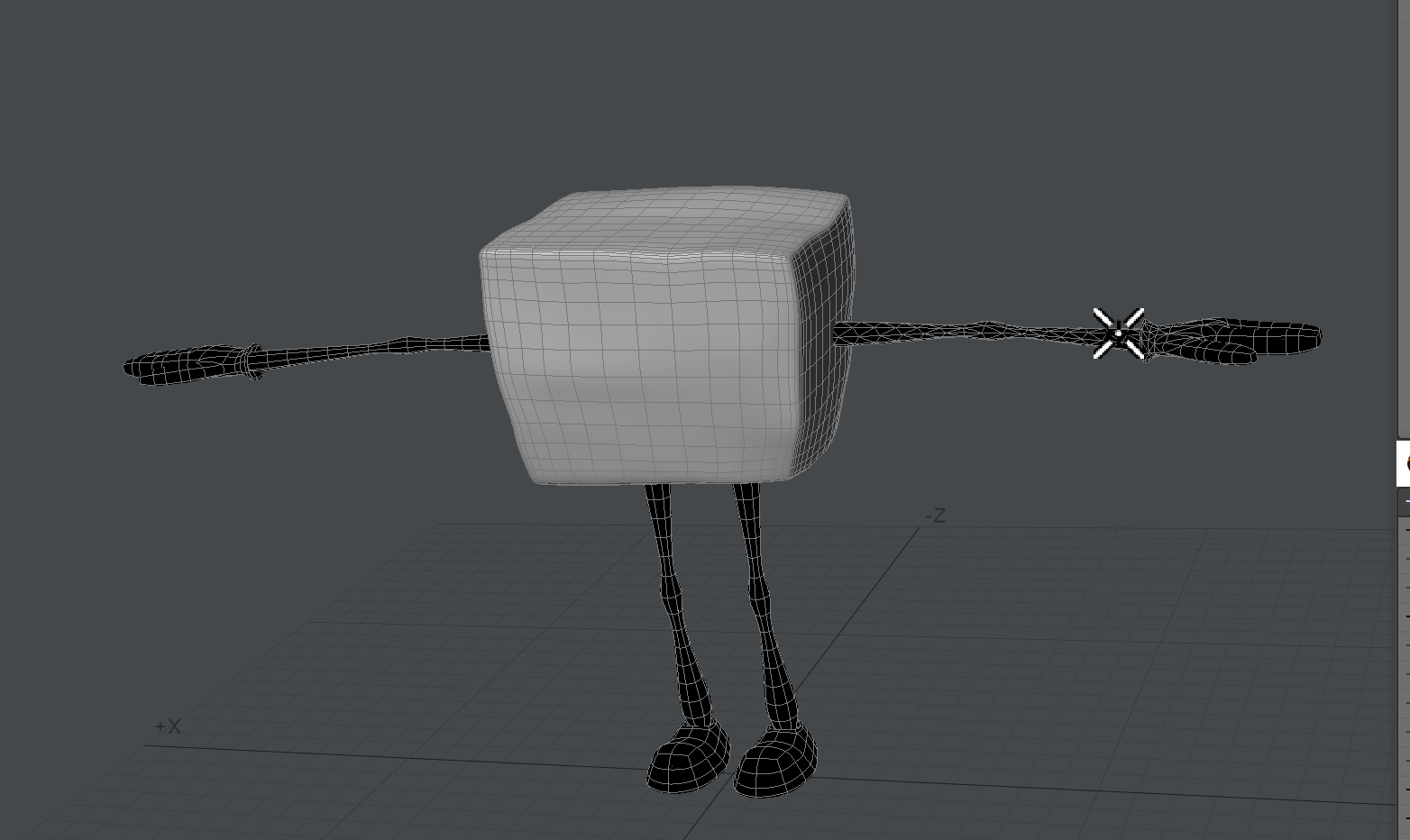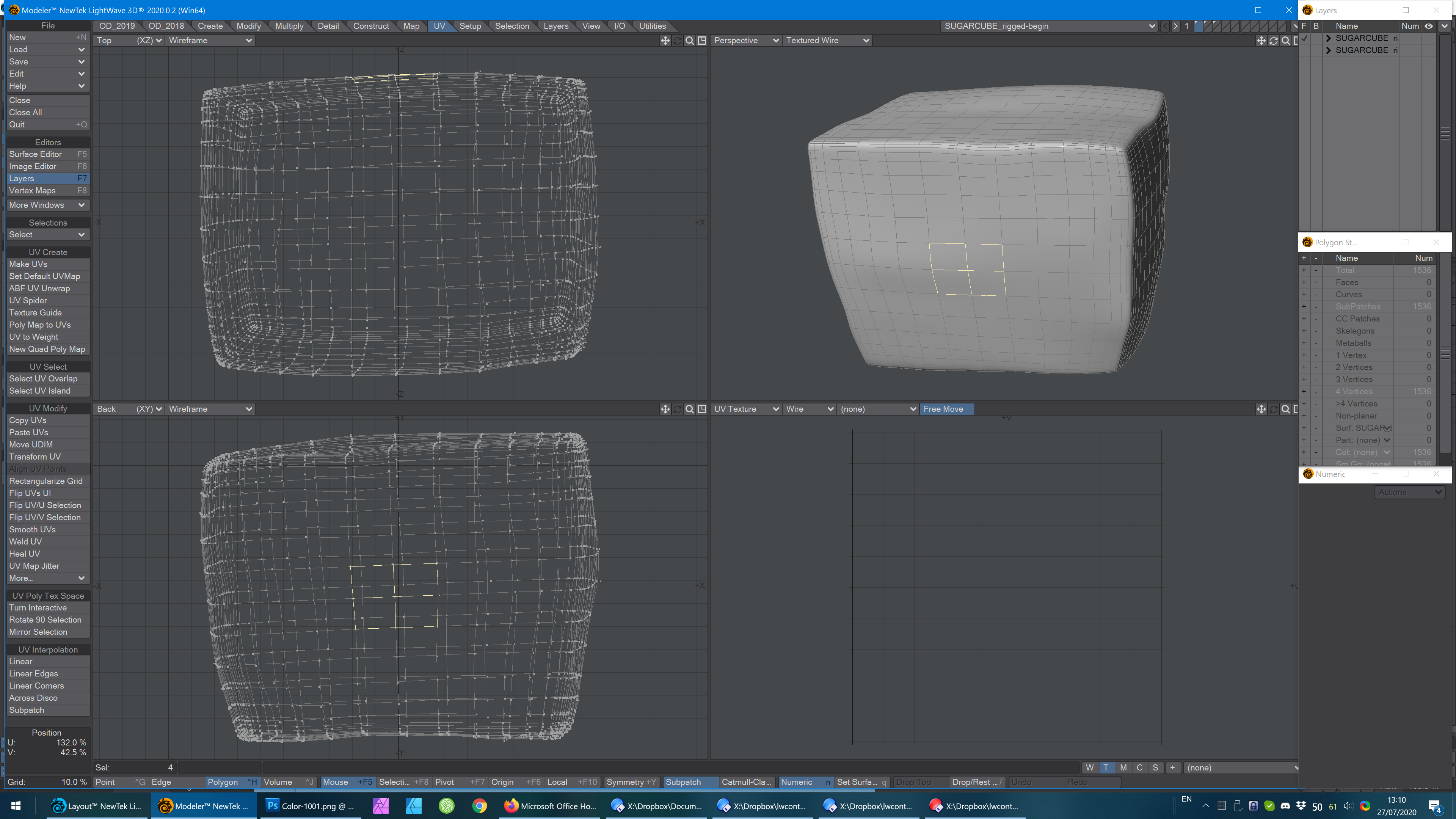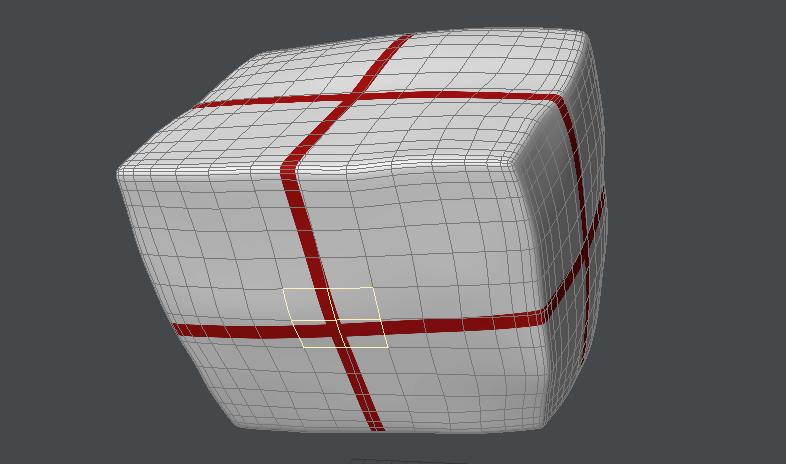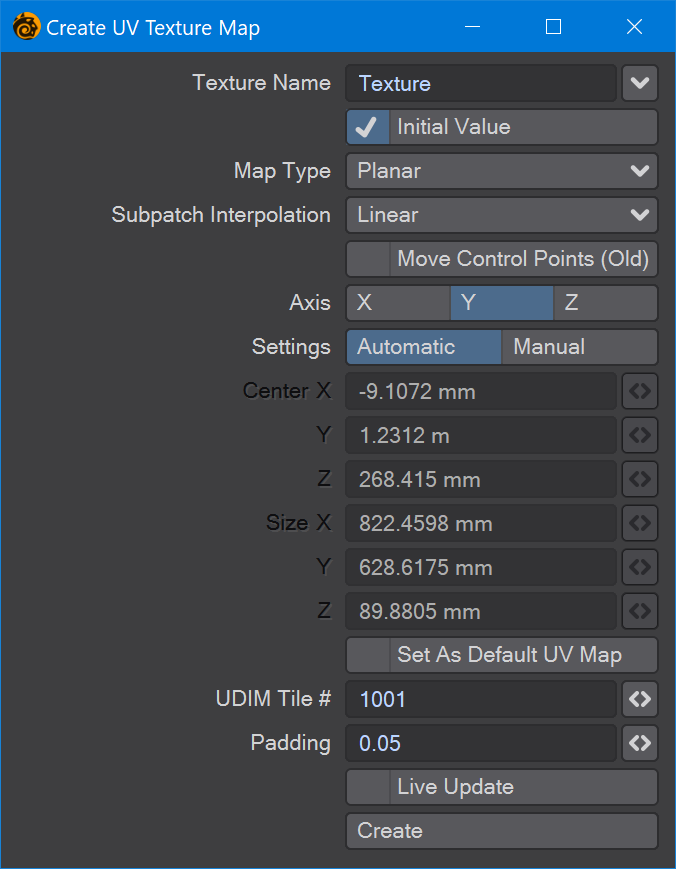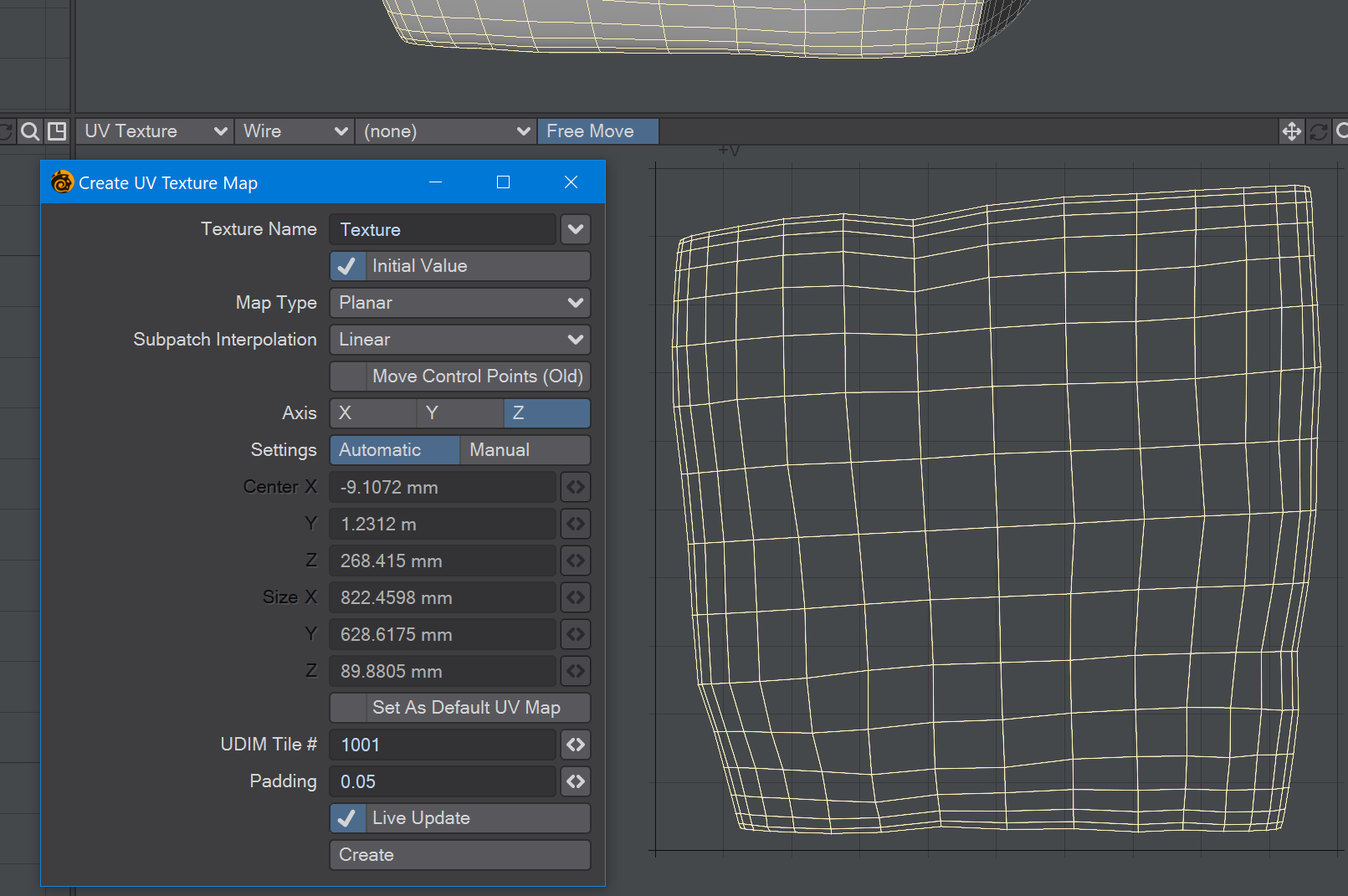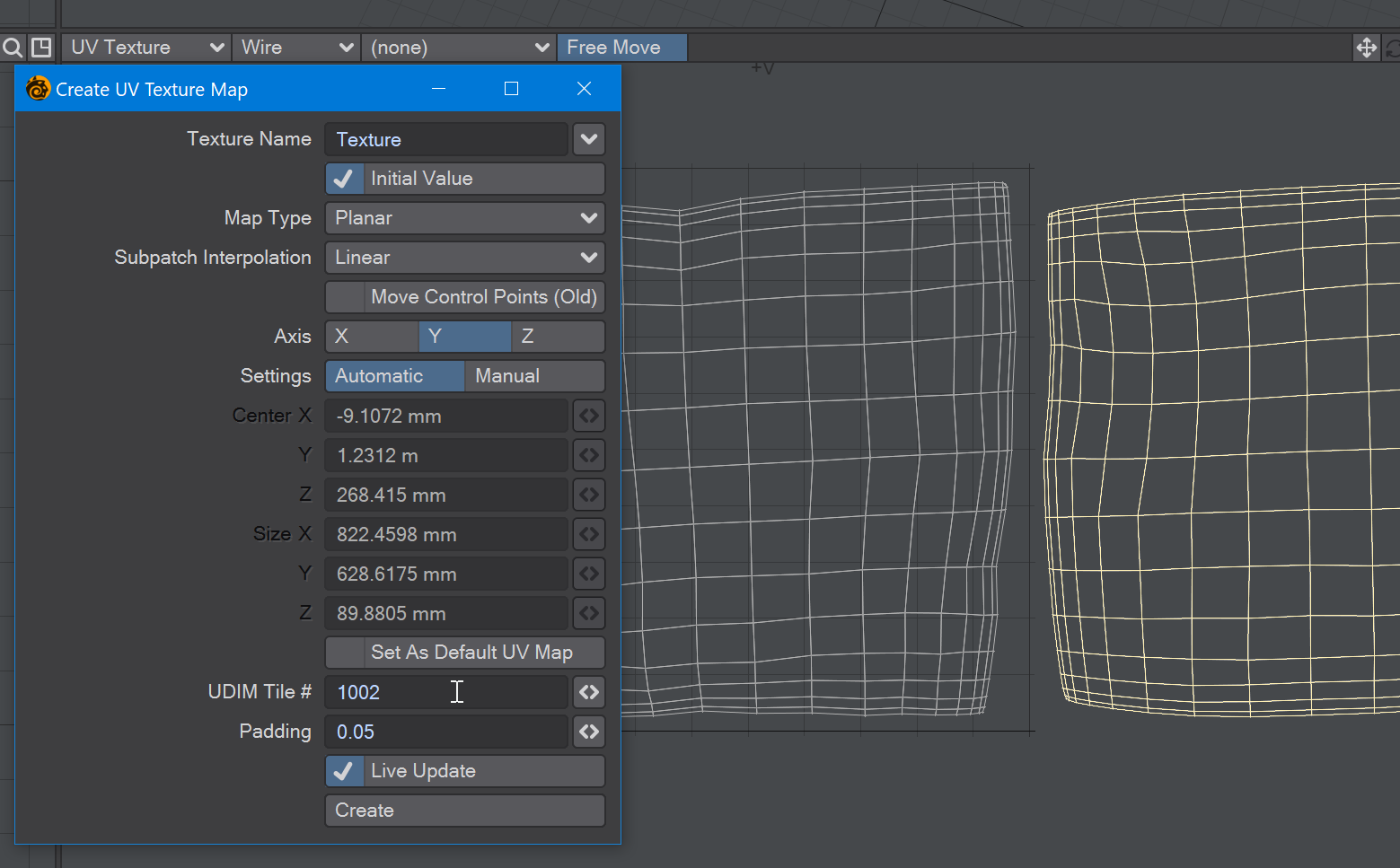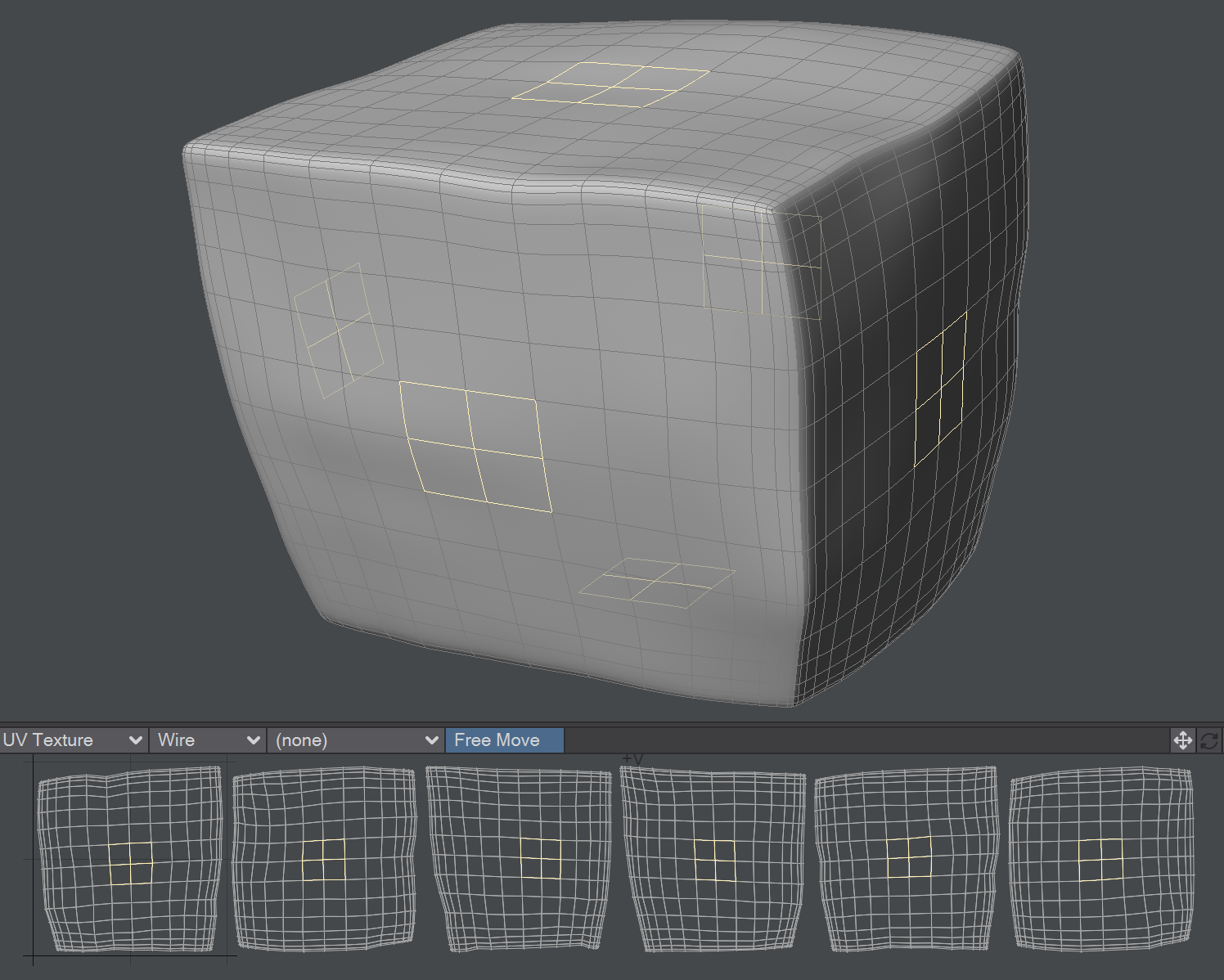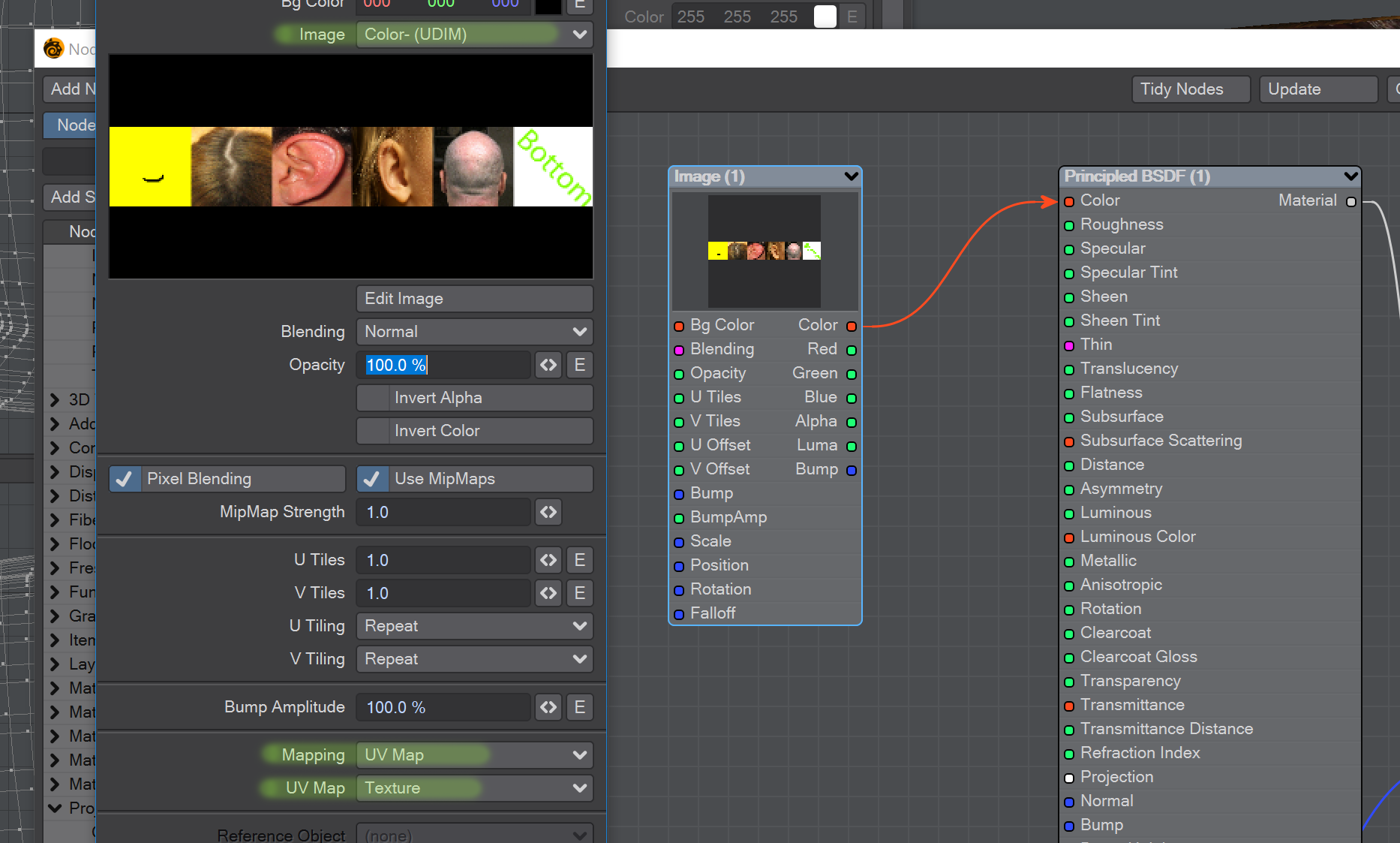Example - UDIM texturing the Sugarcube character
As an example of using UDIMs to texture a character, we have chosen the Sugarcube from the Genoma examples.
We'll start by hiding everything we don't absolutely need:
With the Sugarcube character, the easiest way to hide the Skelegons used for rigging is to open the Statistics panel (W) while in Polygon selection mode and hit the + next to the Skelegons entry. Hit - on the keyboard to hide them once selected.
Select polys on the hands, arms legs, and feet, then use Select Connected (]) to make sure everything is selected, then hide (-)
Once done, hitting A should fill the viewport with the cube.- Now we have our cube front and center we can UV map it. Since we want to use UDIM tiles for our map, we are going to proceed slightly differently to a standard Atlas map. First, switch one viewport to UV. Then, with the front of the cube in view (the side facing +Z), select the four polygons in the center
Use Selection > Modify Selection > Expand (}) to select the whole side (should be seven expands).
Cut the polygons from the cube (Ctrl-X) and paste them back (Ctrl-V) to separate the polygons and then we will start our UV map. Click the T under the bottom right viewport and select (new) from the dropdown menu. Doing so will open the following window:
We want to leave the Map Type as Planar, but change the Axis to Z and at the bottom of the window, change the Padding to 0.05, and check Set as Default UV Map. Hit Create and we will start our UDIM UV map. - We need to repeat the steps for the other sides of the cube. Do the top of the cube next, selecting the middle four polys and expanding the selection. Cut the selected poly and Paste them back in place, then choose the appropriate axis for the UV map. We keep the same Texture Name, but for each additional face of the cube, we increment the UDIM Tile # at the bottom of the Create UV window.
- Proceed in this fashion from the most to the least important. I have chosen Front, Top, Left, Right, Back, Bottom for my order.
- Our UDIM UV map is complete. For this example, I created six images. The original images are included in the content directory, but need to share a name and have a suffix relating to the UDIM tile they are for - my image for the front of the cube is named Color-1001.png. This naming refers to the use for the image (a color map) and the tile for which it is intended.
All that remains now is to use this UDIM sequence to map our cube - Open the Surface Editor (F5) and double-click the SUGAR_BODY surface. Add an Image node and hook its Color output to the Color input on the PBSDF material. Double-click the Image node and set the Image to Color- (UDIM). Lower down, choose the UV Map Mapping option, and set the UV Map to Texture.
- One thing is still wrong with our texturing. Some of the tiles are mirrored - ears facing the wrong way, for example. Right now, our six faces for the cube are all separate objects so now is the right time to Flip UVs. Go into UV >UV Modify and choose Flip UV/U Selection. That should set your right ear in the correct direction. The same is also true for our bottom polys, so clear any selection, click on one of the bottom polys and use Flip UV/U Selection again.
To see the image map overlaid on the UVs, select the Color- (UDIM) image from the dropdown at the top of the UV viewport - Once the UVs are the right way around and the image map fits correctly you can merge points (M) for the cube and unhide (\) the additional elements before saving.
